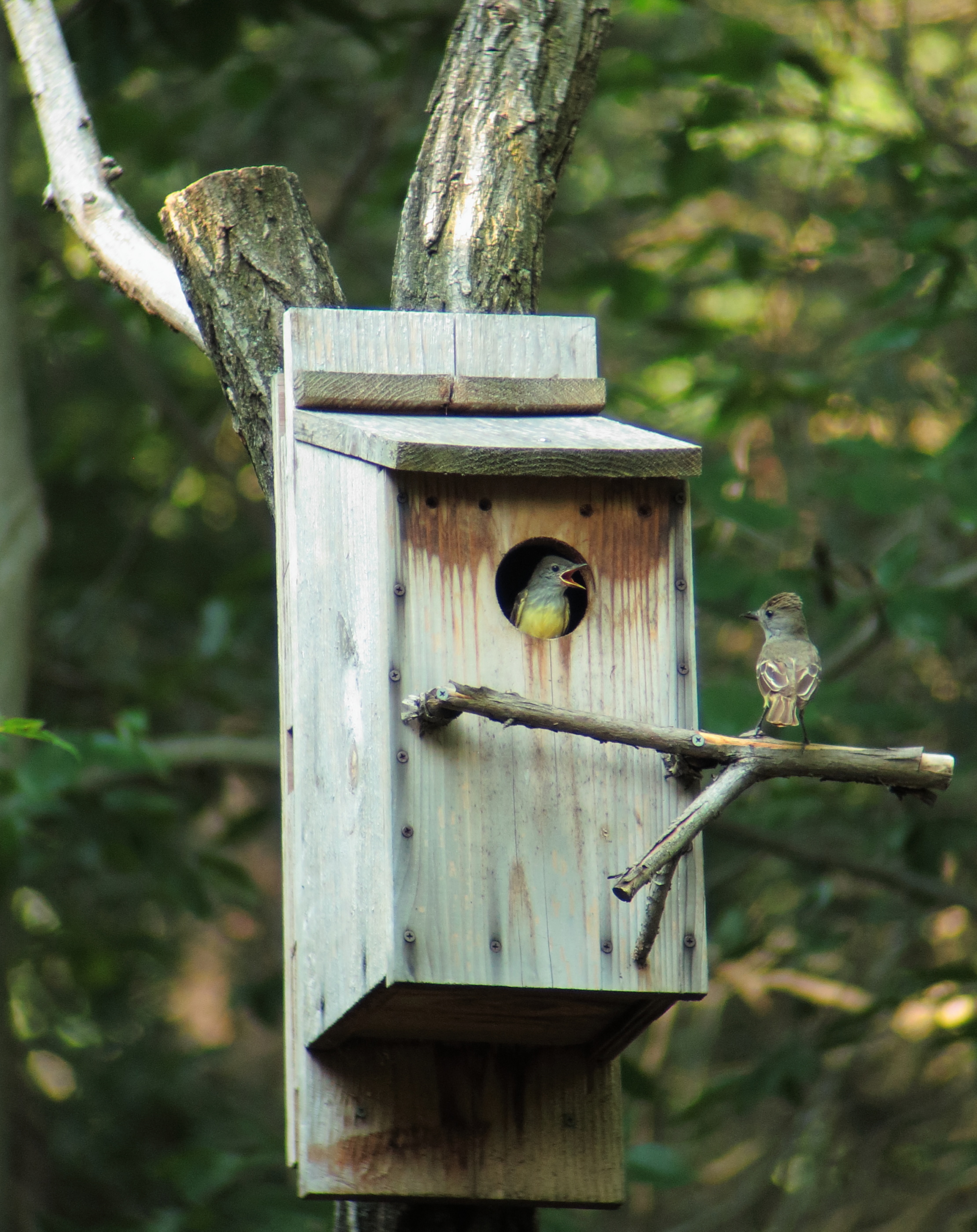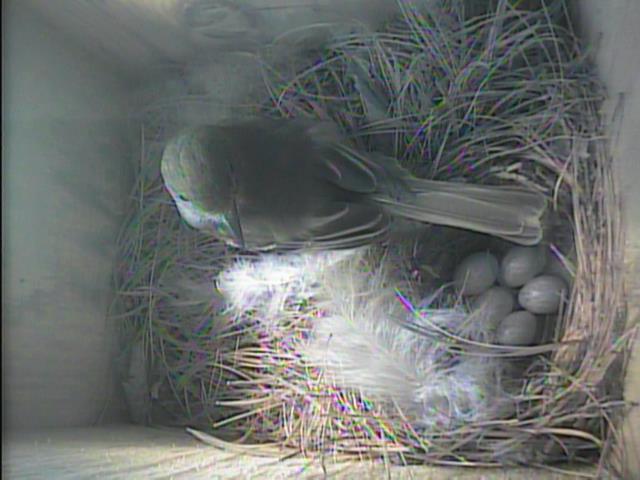Hildacy: Great Crested Flycatchers
By Mike Coll, preserve manager

One of my first projects when I became the manager of Hildacy Preserve was to install a Screech Owl nest box in the woods behind the house. Almost immediately an owl began roosting there and in each of the eight years since, the box (now redesigned multiple times and outfitted with a camera) has provided fascinating opportunities to observe the wildlife living around me.
Last winter, the Black Walnut tree on which the box was mounted came down in a storm. And while thankfully the owls were not in the box at the time, it had to be rebuilt once again. For the latest version, I dragged the trunk of a smaller downed tree back to the same spot and anchored it in the ground where the important criteria were met; beneath the canopy, but near the edge; close enough to provide a view, but not so close that owls would not nest there. Then, during the April breeding season I watched as once again a male Screech Owl took up residence in the box and called for a mate. At times a female owl joined him there, but for some mysterious reason the pair decided against the location this year and presumably found some other nearby cavity more suitable in their minds for raising young. Once the owls had made their decision, the box remained vacant for some time and I stopped checking on it.
Then in late May, I saw a flutter of activity near the box. I checked the camera feed and was surprised to see a Great Crested Flycatcher taking advantage of the owls’ absence and building a nest. Like Screech Owls, Great Crested Flycatchers are “secondary cavity nesters,” meaning that they are a species that makes use of cavities that are naturally formed or previously excavated by other species (as opposed to primary cavity nesters like woodpeckers, which create their own cavities). For the next few days, the female Great Crested Flycatcher arranged pine needles into a small cup shaped nest and the male called constantly, announcing his territory from the surrounding treetops. I became so accustomed to hearing his loud “wheeeep!” around my house that, when I suddenly stopped hearing it, its absence was notable. The female had laid her first egg. She went on to lay a total of five eggs, which she incubated for two weeks. All five eggs hatched in the same day and within minutes the adult birds began stuffing insects into the mouths of the young.

For the next two weeks, both adults worked tirelessly to provide the constant stream of insects required by their growing offspring. As the chicks got larger, so too did the size of the insects the adults brought them. After 15 days of eating, all five young were nearly identical copies of their parents, both in size and coloration. One by one they left the nest, flying to nearby trees where the mature birds would continue to feed them until they could learn to hunt on their own. I observed many of these young calling and foraging around my house in the month that followed, but by August they had mostly dispersed. In the fall these new birds face the challenge of migrating to Central America with the rest of their species. Those that survive will hopefully return in the springtime to begin the process anew.
